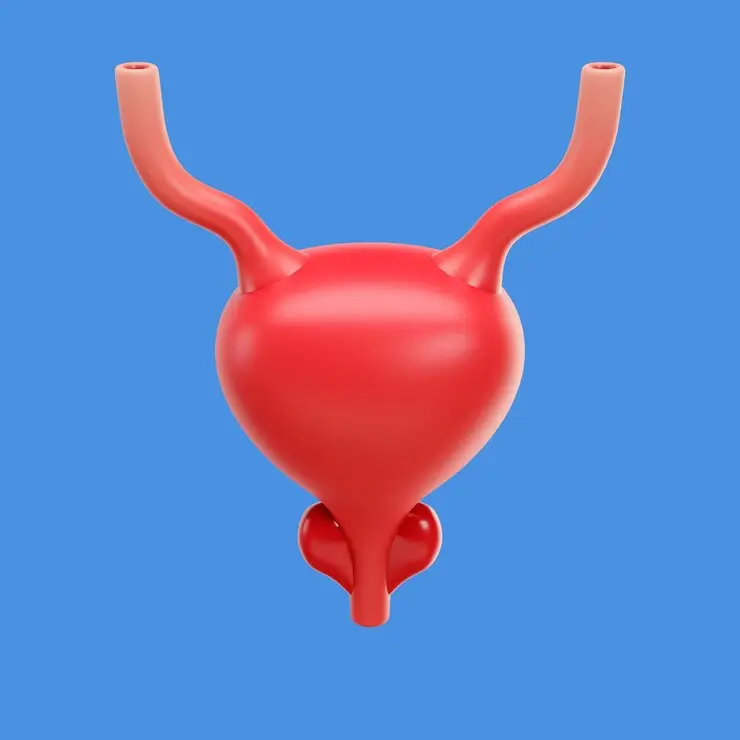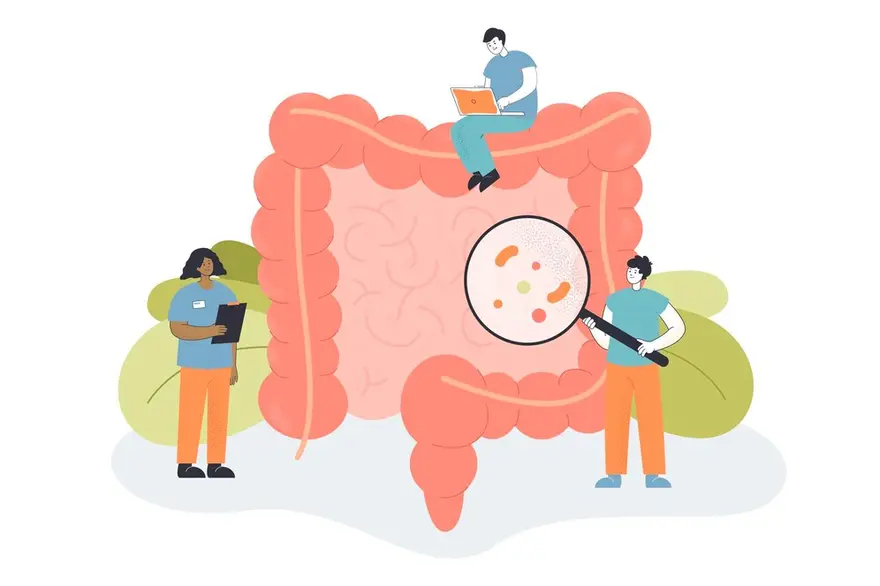Preventive Healthcare
Everything You Need To Know About Overactive Bladder (OAB)
1338 Views
0

Unpredictable urges, frequent bathroom trips, and disruptions to daily life characterise an Overactive Bladder (OAB). Understanding this condition is vital to regaining control. Keep reading to understand the intricacies of OAB Bladder— from its impact on routines to effective management strategies — to reclaim a life free from constant interruptions and discomfort.
What is an Overactive Bladder?
Overactive Bladder (OAB) is a condition characterised by sudden, frequent urges to urinate, often resulting in involuntary leakage. It disrupts urinary control and can impact daily activities, affecting social, physical and psychological well-being.
Who Does an Overactive Bladder Affect?
OAB can impact individuals of any age but is more prevalent in older adults, particularly women. However, it is not an inevitable part of ageing and can affect anyone, influencing their quality of life.
How Common is an Overactive Bladder?
OAB bladder is prevalent, affecting approximately 16% of adults, with the prevalence increasing with age. Studies show varying rates, such as 27.4% overall, 32.4% in women and 22% in men, emphasising its significant impact on the population.
How Does an Overactive Bladder Affect My Body?
OAB disrupts normal bladder function, causing urgency, frequent urination and sometimes leakage, affecting daily routines. This potentially leads to emotional distress or embarrassment.
Does an Overactive Bladder Go Away?
OAB can improve or resolve with various overactive bladder treatments, including lifestyle changes, medications and overactive bladder therapies. However, it may not completely disappear for everyone. Individual responses to treatment vary; long-term management is often necessary to alleviate symptoms and improve quality of life.
What are The Symptoms of an Overactive Bladder?
Overactive bladder (OAB) manifests through a set of bothersome symptoms.
- Urinary Urgency: This involves a sudden and intense need to urinate. Once the urge hits, there's a limited time to reach a bathroom.
- Frequent Peeing: Individuals with an overactive bladder may need to use the bathroom more frequently than usual. This can disrupt daily activities and lead to inconvenience.
- Urge Incontinence: This symptom involves a sudden and involuntary loss of urine due to the intense urge to urinate. It may result in leakage before reaching the restroom.
- Nocturia: People with an overactive bladder may experience the need to wake up at least twice during the night to urinate. This can lead to disrupted sleep patterns and fatigue.
What is the Main Cause of Overactive Bladder?
OAB is a condition characterised by a range of symptoms, primarily driven by involuntary contractions of the bladder muscles. While the precise cause can be multifactorial, several key factors contribute to the development of OAB. They include:
- Muscle Contractions: The leading cause of OAB is the involuntary contraction of the detrusor muscle, which surrounds the bladder. These contractions create a sudden and strong urge to urinate, leading to the characteristic symptoms of OAB.
- Neurological Factors: Neurological disorders, such as multiple sclerosis or stroke, can disrupt the normal signalling between the brain and the bladder, leading to overactivity. This interference can result in the bladder contracting at inappropriate times, causing urgency and frequency.
- Medical Conditions: Underlying medical conditions like diabetes can contribute to OAB. Poorly controlled diabetes can impact nerve function, including those related to bladder control, exacerbating symptoms.
- Infections and Stones: Acute urinary tract infections or the presence of bladder stones can irritate the bladder, leading to symptoms of overactivity.
- Age and Hormonal Changes: Aging can weaken the bladder muscles, making them more prone to involuntary contractions. Hormonal changes, especially in postmenopausal women, may also contribute to bladder dysfunction.
- Understanding and addressing the underlying cause are crucial for effectively managing and treating overactive bladder.
How is an Overactive Bladder Diagnosed?
To diagnose overactive bladder (OAB), your doctor will take a comprehensive consideration of your health history about previous urinary issues and pinpoint when symptoms began. This involves a physical examination, relevant questioning, and specific tests.
Key questions include:
- Frequency of urination
- Severity and frequency of urine leakage
- Presence of pain or discomfort during urination
- Duration of urge or incontinence symptoms
- Usage of incontinence pads
- Current medications and medical history, including recent surgeries or illnesses
Maintaining an OAB diary aids in answering these questions. Daily records of fluid intake, urination frequency and volume, urgency instances, and any discomfort provide valuable insights.
What Tests Will be Done to Diagnose an Overactive Bladder?
Diagnosing overactive bladder involves a series of tests and assessments to understand the underlying causes and determine the most suitable treatment plan for the individual. These include:
- Urinalysis: This test examines urine for signs of infection, inflammation, kidney problems, or diabetes, aiding in identifying potential causes of OAB bladder.
- Postvoid Residual Volume: Measures remaining urine in the bladder after urination, often performed using a catheter or ultrasound, assessing bladder emptying effectiveness.
- Uroflowmetry: Assesses the rate and volume of urine flow, detecting potential obstructions affecting urination.
- Cystoscopy, Ultrasound and Urodynamic Testing: These more specialised tests help visualise the bladder and urethra and assess bladder function in detail. They are often reserved for cases requiring a more comprehensive evaluation due to unusual symptoms or insufficient response to initial overactive bladder treatments.
The diagnostic process typically begins with a comprehensive health history review, where a healthcare professional inquires about urinary symptoms, past conditions and medications. Physical examinations follow, including abdominal, pelvic and neurological assessments to check for any signs indicating OAB or related conditions. These tests collectively aid in pinpointing the cause of OAB bladder, allowing doctors to tailor effective treatment strategies for individuals suffering from this condition.
How Do you Fix an Overactive Bladder?
Treatment for overactive bladder (OAB) may include lifestyle changes, medications and, in some cases, surgical interventions. Consult a healthcare professional for personalised guidance.
What Behavioural Changes Can I Make to Help Fix an Overactive Bladder?
Behavioural changes to improve overactive bladder include bladder training, timed voiding, pelvic floor exercises and minimising irritants like caffeine and alcohol.
Keeping a Bladder Diary
A bladder diary is a valuable self-monitoring tool for individuals experiencing urinary issues. This practice involves recording essential information related to urination patterns, fluid intake and instances of leakage. The bladder diary typically includes data such as the time and volume of each void, any episodes of urgency or leakage and details about fluid intake.
By consistently documenting these details, healthcare professionals can gain insights into the frequency of bathroom visits, potential triggers for urgency or incontinence and the impact of fluid intake on bladder function.
Monitoring Your Diet
Monitoring your diet is crucial for managing overactive bladder symptoms. Dietary adjustments can significantly alleviate discomfort by identifying and avoiding bladder irritants like caffeine, spicy foods and acidic beverages. These modifications contribute not only to symptom relief but also to overall better bladder health and well-being.
Maintaining Bowel Regularity
Maintaining bowel regularity is essential in managing overactive bladder symptoms, as constipation can exacerbate the condition. Adequate fibre intake, combined with proper hydration, promotes digestive health, preventing constipation and reducing pressure on the bladder.
Establishing a regular bathroom schedule further supports pelvic function by minimising strain on the bladder. This holistic approach contributes to overall well-being, addressing the interconnected digestive and urinary health aspects of individuals with overactive bladder.
Managing Your Weight
Managing your weight is essential for overall health and can positively impact bladder function. Excess weight can contribute to bladder issues, and maintaining a healthy weight reduces the burden on the pelvic floor muscles and the bladder.
Stop Using Tobacco Products
Tobacco use can exacerbate bladder symptoms. Smoking irritates the bladder and is linked to chronic coughing, which can strain pelvic muscles. Quitting tobacco supports bladder health and decreases the risk of associated complications.
Bladder Retraining
Bladder retraining is a behavioural intervention that aims to enhance bladder capacity and control by progressively extending the intervals between bathroom visits. This approach effectively manages overactive bladder symptoms, particularly urgency and frequency. By consciously extending the time before voiding, you can retrain your bladder to hold more urine, reducing the urgency associated with overactive bladder and promoting better urinary function.
How Do You Reset an Overactive Bladder?
Resetting an overactive bladder involves various strategies and lifestyle changes to improve bladder function and reduce symptoms of urgency, frequency and incontinence. Here are several approaches to resetting an overactive bladder:
- Bladder Training: Bladder training is a behavioural therapy that gradually increases the time between bathroom visits. By consciously delaying voiding and extending the intervals over time, individuals can retrain their bladder to hold more urine and reduce the urge to urinate frequently.
- Pelvic Floor Exercises: Strengthening the pelvic floor muscles through exercises, such as Kegel exercises, can enhance bladder control. These exercises and overactive bladder therapies target the muscles responsible for starting and stopping urine flow, promoting better muscle tone and urinary function.
- Lifestyle Modifications: Adopting a healthy lifestyle can positively impact bladder function. This includes maintaining a healthy weight, managing stress and avoiding irritants like caffeine and alcohol, which can exacerbate overactive bladder symptoms.
- Fluid Management: Regulating fluid intake, especially in the evening, can help control overactive bladder symptoms. Avoiding large amounts of fluids close to bedtime can reduce nighttime urgency and frequency.
- Medication: In some cases, doctors may prescribe medications to relax the bladder or reduce its sensitivity, helping to alleviate overactive bladder symptoms.
- Behavioural Interventions: Interventions, such as biofeedback and relaxation techniques, can be beneficial in managing overactive bladder symptoms. These approaches aim to improve awareness and control over pelvic muscles and reduce stress-related impacts on bladder function.
It is important to note that the effectiveness of these strategies may vary among individuals, and consulting with a healthcare professional is crucial for personalised guidance and treatment. Implementing a combination of these approaches and overactive bladder therapies can contribute to resetting an overactive bladder and improving overall urinary health.
How Do I Control Urges When Resetting My Bladder?
Several strategies can be effective in managing the urgency associated with overactive bladder:
- Urge Suppression Techniques: Practice urge suppression techniques like relaxation and Kegel exercises. These exercises strengthen the pelvic floor muscles and help control the urine flow, contributing to better bladder control.
- Identify Triggers: Recognise and identify triggers that stimulate the urge to urinate. Certain sights, sounds, or situations may signal your brain that it's time to use the restroom. By understanding and managing these triggers, you can reduce the frequency and intensity of urges.
- Behavioural Strategies: Implement behavioural strategies like the 'stop and stay put' method. When you feel the urge to urinate, stop your activity, remain in your current position and focus on controlling the urge. This method can help interrupt the automatic response to urgency.
- Limiting Triggers: Limit the intake of bladder irritants such as caffeine and alcohol, as they can exacerbate urgency. Additionally, avoid artificial sweeteners and other substances that stimulate the bladder, contributing to better urge control.
Can Nerve Stimulation Help the Overactive Bladder?
Yes, nerve stimulation can effectively treat overactive bladder (OAB). Techniques like Percutaneous Tibial Nerve Stimulation (PTNS) and Posterior Tibial Nerve Stimulation (PTNS) have demonstrated safety and efficacy. PTNS involves placing a needle near the ankle, stimulating the tibial nerve, and offering a non-surgical treatment option for urinary urgency, frequency and incontinence.
Sacral Nerve Stimulation
Sacral Nerve Stimulation (SNS) is a therapeutic technique involving the implantation of a device that delivers electrical impulses to the sacral nerves located in the lower spine. This treatment is used to address various conditions, including overactive bladder, urinary retention, urge incontinence and faecal incontinence. SNS modulates the signals between the bladder, spinal cord and brain, aiming to alleviate symptoms associated with these conditions.
Research has shown that SNS effectively reduces voiding frequency and improves bladder function, making it a valuable option for individuals who have not responded well to other overactive bladder treatments. However, as with any medical procedure, there are associated risks, and the decision to undergo sacral nerve stimulation should be made in consultation with healthcare professionals.
Percutaneous Tibial Nerve Stimulation
Percutaneous Tibial Nerve Stimulation (PTNS) is a non-surgical treatment for urinary urgency, frequency and incontinence. It involves placing a needle near the ankle to stimulate the tibial nerve, impacting bladder function positively. PTNS is considered safe and effective in managing overactive bladder symptoms.
Botulinum Toxin Injections
Botulinum injections have shown efficacy in treating overactive bladder (OAB), particularly in cases refractory to traditional interventions. Studies support the benefits for patients with medication-resistant OAB, demonstrating improved symptoms and quality of life. This neurotoxin is injected into the detrusor muscle, blocking nerve signals and contributing to bladder overactivity. Botulinum toxin injections, such as OnabotulinumtoxinA, are considered a safe and effective option, offering relief for individuals with refractory OAB bladder.
What Medications Are Used to Treat Overactive Bladder?
Medications for overactive bladder include antimuscarinics (oxybutynin) and beta-3 adrenergic agonists (mirabegron), offering relief from urinary urgency and frequency.
Anticholinergic Medications
Anticholinergic medications, like oxybutynin, block muscarinic receptors, relaxing bladder muscles and reducing symptoms of overactive bladder.
Beta-3 Adrenergic Medication
Mirabegron, a beta-3 adrenergic agonist, treats an overactive bladder by stimulating beta-3 receptors, relaxing bladder muscles and reducing urgency.
How Soon After Treatment Will I Feel Better?
The timeframe after overactive bladder treatment varies for improvement. Some may experience relief shortly after starting medications or overactive bladder therapies, while others may require weeks to notice significant changes. Factors like the line of treatment, individual response and the severity of symptoms contribute to this variability.
Generally, behavioural interventions may show quicker results than medications or procedures. Moreover, having patience is crucial, and it is advisable to follow the doctor's guidance, attend follow-up appointments and make necessary lifestyle adjustments for optimal outcomes.
How Can I Reduce My Risk of Developing an Overactive Bladder?
To reduce the risk of developing an overactive bladder, consider adopting lifestyle changes:
- Maintain a Healthy Weight: Obesity is a risk factor; managing weight reduces the likelihood.
- Stay Hydrated: Adequate fluid intake supports bladder health; avoid excessive caffeine and alcohol.
- Pelvic Floor Exercises: Strengthening pelvic muscles through Kegel exercises can be beneficial.
- Avoid Bladder Irritants: Limit consumption of acidic foods, caffeine and alcohol.
- Regular Exercise: Physical activity promotes overall health, potentially reducing the risk.
- Manage Chronic Conditions: Control diabetes and address other chronic health issues.
What Can I Expect If I Have an Overactive Bladder?
Living with an overactive bladder (OAB) means contending with sudden, uncontrollable urges to urinate and potential involuntary urine loss. The persistent sensation of needing to urinate, frequent bathroom trips, and nightly awakenings for urination (two or more times) further characterise the challenges faced by individuals managing this chronic condition.
How Do I Take Care of Myself?
Overactive bladder (OAB) management involves a multifaceted approach, with behavioural interventions as the initial strategy, addressing symptoms without side effects. These interventions encompass:
- Pelvic Floor Exercises: Strengthening pelvic muscles aids in controlling involuntary bladder contractions.
- Biofeedback: Electrical sensors assist in learning and implementing subtle body changes, enhancing the ability to suppress urgency.
- Scheduled Toilet Trips: Establishing regular toileting times helps normalise urination patterns.
- Intermittent Catheterisation: If bladder emptying is incomplete, periodic catheter use facilitates complete emptying.
- Absorbent Pads: These protect against leakage, maintaining an active lifestyle.
- Bladder Training: Gradual delay of voiding urges enhances control.
- Bladder Injections: Botox injections offer temporary relief for severe urge incontinence, necessitating periodic re-administration.
- Nerve Stimulation: Techniques like sacral nerve stimulation and percutaneous tibial nerve stimulation regulate nerve impulses, improving symptoms.
- Surgery: Reserved for severe, unresponsive cases; procedures enhance bladder function or, in extreme cases, involve bladder removal.
When Should I See a Healthcare Provider?
If you are dealing with symptoms like sudden urges to urinate, frequent disruptions to work or sleep due to frequent urination, or involuntary urine leakage, it is advisable to consult a healthcare provider. These symptoms can impact emotional well-being, causing embarrassment and significantly disrupting daily routines. Although an overactive bladder is more common in older adults, it is not a typical part of the aging process. Therefore, seeking medical advice can help identify the underlying causes and determine appropriate management strategies.
What Questions Should I Ask a Healthcare Provider?
When consulting a healthcare provider about overactive bladder (OAB), consider asking the following questions to gain a comprehensive understanding of your condition and potential treatment options:
- What might be causing my OAB symptoms?
- Can you provide a specific diagnosis for my OAB?
- Do I need screening for underlying conditions like prostate cancer?
- How do you determine that I have an overactive bladder?
- What treatment options are available for OAB, considering medications and alternatives if needed?
- If medications are prescribed, what if they don't work for me, and are there other treatment options?
- If my OAB symptoms improve, can I discontinue the prescribed medication?
Conclusion
Understanding overactive bladder (OAB) is crucial for effective management. Characterised by frequent urges to urinate, consulting healthcare providers about OAB can help tailor a suitable plan for symptom management and improved quality of life. Ensure to inquire about overactive bladder causes, diagnostic processes and available overactive bladder treatments for comprehensive diagnostics, and keep your tabs on for comprehensive health insights with Metropolis Labs. With top pathology and health check-up services by qualified technicians, Metropolis brings convenience to your doorstep. Trust Metropolis for accurate reports, ensuring your well-being is in capable hands.













1701259759.webp)









 WhatsApp
WhatsApp